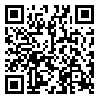BibTeX | RIS | EndNote | Medlars | ProCite | Reference Manager | RefWorks
Send citation to:
URL: http://journal.zums.ac.ir/article-1-5522-en.html
2- Student Researches Committee, Ramsar Campus, Mazandaran University of Medical Sciences, Ramsar, Iran
3- Dept. of Pharmacology, School of Medicine, Guilan University of Medical Sciences, Rasht, Iran ,
Background & Objective: Securigera securidaca is a medicinal plant used in Persian folk medicine to decrease blood sugar. Nevertheless, there is some controversy about its effects. The current study investigated the hypoglycemic activity of the aqueous seed extract of S. securidaca.
Materials & Methods: Sixty mature male Charles-River rats were categorized and divided randomly into 10 groups with two timeframes (7 and 14 days). To induce diabetes, rats were injected intraperitoneally with 7 mg/0.5 mL streptozotocin in normal saline per 100 g body weight. The aqueous seed extract of S. securidaca was given orally to rats daily (80 mg/0.5 mL in distilled water per 100 g of rat body weight). The blood sugar of rats was measured on the 7th and 14th days. Blood lipid indices and ALT, AST, and ALP plasma levels were measured after 14 days of treatment.
Results: The findings showed that the S. securidaca aqueous seed extract had a significant effect on the blood sugar of rats after 7 and 14 days compared with the diabetic group. After 14 days, there was a significant difference in the weight of treated rats between the S. securidaca aqueous seed extract and diabetic groups. The S. securidaca aqueous seed extract had no significant effect on the blood lipid profiles of the treated rats. The AST enzyme levels were significantly higher in rats exposed to the seed extract than in the diabetic group.
Conclusion: Based on the results, S. securidaca seed extract had a significant effect in reducing the blood sugar of diabetic rats with no significant changes in lipid profiles. More studies are needed to explore in more detail the mechanism of this hypoglycemic effect.
✅ Based on the results, S. securidaca seed extract had a significant effect in reducing the blood sugar of diabetic rats with no significant changes in lipid profiles. More studies are needed to explore in more detail the mechanism of this hypoglycemic effect.
Received: 2019/01/22 | Accepted: 2019/03/1 | Published: 2019/07/1
| Rights and permissions | |
 |
This work is licensed under a Creative Commons Attribution-NonCommercial 4.0 International License. |






